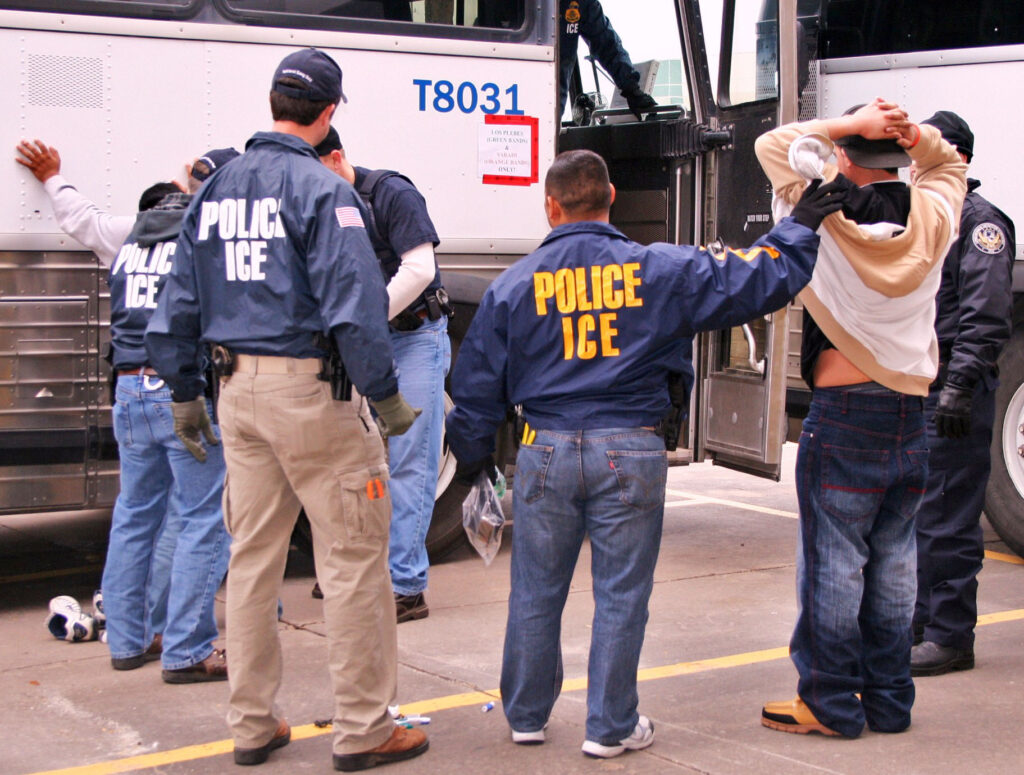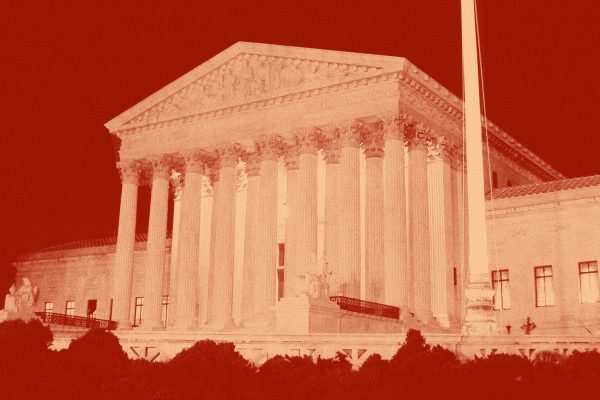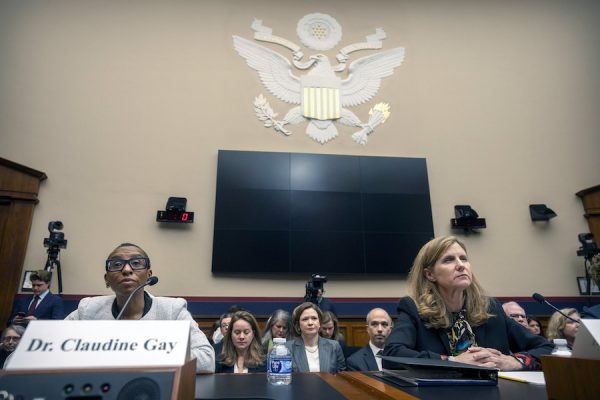The furor against sanctuary cities hit a fevered pitch after the July 2015 killing of thirty-two-year-old Kathryn Steinle. She was shot in San Francisco by Juan Francisco Lopez-Sanchez, an undocumented Mexican immigrant who had seven felony convictions and had been deported five times. Lopez-Sanchez had been released when the San Francisco police declined to detain him for immigration authorities after drug charges against him were dropped.
A year later at the Republican National Convention, Donald Trump used her death as a rallying cry: “My opponent wants sanctuary cities but where was the sanctuary for Kate Steinle?” One of his first actions as president was to sign an executive order threatening to strip federal funding from sanctuary cities—an estimated four hundred jurisdictions that limit, in varying degrees, the manner in which their police assist with immigration enforcement.
Trump tells a story of recalcitrant local authorities, violent immigrants, and sanctuary cities as breeding grounds for crime. Apparently many Americans embrace that story. In recent polls, a majority oppose sanctuary cities and want local law enforcement to cooperate with federal authorities. Why then, under the threat of Trump’s order, did many sanctuary cities double down on their commitments to immigrants?
Sanctuary cities do not harbor criminals, they merely refuse to take on the tasks of federal immigration enforcement.
While Miami mayor Carlos Gimenez acquiesced to the administration’s threat and ordered his jails to comply with federal requests, other jurisdictions have reaffirmed their immigrant-friendly positions and some are considering expanding protections, such as California, which may adopt sanctuary policies statewide, and Washington, D.C., which allocated additional funding to provide legal aid to immigrants facing deportation.
Opponents of sanctuary cities see them as a blight on public safety, but security concerns are one of the reasons that hundreds of jurisdictions think sanctuary cities are a good idea. It all depends on your views of the threat of criminality among immigrants and what policies best serve public safety. Fortunately the record on those issues is well-documented.
• • •
Trump’s assertion that sanctuary cities breed crime is, like many of his other canards about immigrants, unfounded. An October 2016 study by researchers from University of California, Riverside and Highline College found “no statistically discernible difference in violent crime rate, rape, or property crime across the cities.” They concluded that “sanctuary policies have no effect on crime rates, despite narratives to the contrary.” The report echoes the findings of other studies that do not bear out increased crime in sanctuary cities. And the societal benefits are not limited to lower crime: economies are stronger in sanctuary counties.
Moreover Trump’s order, in addition to being questionably legal, will undermine, not enhance, security. Indeed one of the most critical arguments for the necessity of sanctuary cities is one of public safety: local officials cannot protect communities that do not trust them. Few if any cities refuse to turn over immigrants charged with serious offenses. Instead they balk at turning over those arrested for minor infractions or verifying the immigration status of people encountered in the course of normal policing. In other words, they simply treat immigrants the same way as everyone else. The New York Times points this out in its story about the Steinle case. While the tragedy was exploited to depict immigrants as dangerous criminals, Lopez-Sanchez did not have a record of violent crime. There is evidence to indicate he did not intend to commit murder, since “the bullet he fired was found to have ricocheted off the pier.” And the suggestion that he sought out San Francisco because it was a sanctuary city is also false. In fact federal officials sent him there to face a minor drug charge, after which he was released—as would be anyone else with only a minor drug offense. The backstory does not ease the anguish of Steinle’s family, but the grand narrative about immigrants that Trump has consistently sought to advance is simply not true. Immigration status is not a predictor of criminality. Quite the opposite: studies have shown that immigrants in the Unites States commit fewer crimes than native-born citizens.
Immigrants in the Unites States commit fewer crimes than native-born citizens.
Misrepresentations also abound about what sanctuary cities actually do and the nature of their commitments. Sanctuary cities take their name from the sanctuary movement that sprung up in the 1980s to provide safe haven for Central American refugees desperate to avoid deportation to the violence-stricken countries from which they fled. Many Americans saw the mayhem as a direct result of Washington’s policies supporting repressive regimes in the region, which, compounded by U.S. hostility to asylum claims from Salvadorans and Guatemalans, motivated a sense of heightened duty by many houses of worship to shelter immigrants from law enforcement.
Unlike the sanctuary movement, sanctuary cities are not actively harboring the undocumented or forgiving crimes when they do commit them; they are refusing to take on tasks of federal immigration enforcement that were never theirs to begin with. Although sanctuary cities can refuse to cooperate, their ability to impede federal immigration is fairly limited: they cannot prevent federal authorities from conducting raids or otherwise enforcing immigration laws themselves.
The number of sanctuary cities grew rapidly in response to the Secure Communities program, implemented under President Bush and continued under the Obama administration. Under that program, local law enforcement sent the fingerprints of anyone arrested to a national database and often detained arrestees for immigration authorities. Numerous complaints—about the program’s impact on safety, concerns about due process and racial profiling, and that it ensnared people for minor offenses as well as non-offenders—compelled the Obama administration to curtail the program in 2014. Under its successor, the Priority Enforcement Program, which focuses on immigrants thought to threaten national and border security and public safety, Immigration and Customs Enforcement (ICE) continues to be notified of all arrests. Trump’s deportation priorities vastly expand those designated by Obama, and he has ordered the reinstatement of the Secure Communities Program.
Punishing sanctuary cities runs afoul of the Tenth Amendment.
Jurisdictions have good reasons to adopt sanctuary policies, some political and some pragmatic. Some municipalities do not want local law enforcement to be active participants in mass deportation and have rallied to the defense of their immigrant communities, in part because the failure of immigration reform has made it impossible for people to stay legally and they abhor the idea of tearing communities apart. Others believe immigration enforcement should be reserved for federal authorities. But the objections extend far beyond jurisdictional and political ones. The primary one is that effective policing is predicated on community trust. The President’s Task Force on 21st Century Policing recognized this: “At all levels of government, it is important that laws, policies, and practices not hinder the ability of local law enforcement to build the strong relationships necessary to public safety and community well-being.” The report concludes that “whenever possible, state and local law enforcement should not be involved in immigration enforcement.”
This is particularly important to protect the vulnerable, such as victims of domestic and sexual violence or exploitation. For them, the fear that interaction with law enforcement could lead to deportation bolsters the power of abusers and serves to further isolate and silence them. Last month in Texas, a woman was detained by ICE—which was acting on a tip suspected to have come from her alleged abuser—in the courthouse just after obtaining a protective order against him. Although records later showed that the woman may have had her own criminal history, the message to other victims about the risks of seeking protection is chilling. Similarly, witnesses critical to prosecuting crimes or good Samaritans may be reluctant to come forward without assurances that they do not risk being reported to immigration authorities. Compounding the cost to community trust, using police departments’ resources to assist in federal immigration enforcement can drain local budgets. Facilitating deportation exacts significant social costs as well, by devastating families and losing immigrants’ contributions to community.
• • •
As Republican governors threaten to cancel grants to sanctuary jurisdictions and lawmakers propose legislation banning sanctuary policies, Trump’s executive order compromises the safety of communities. Its legality is also suspect.
While sanctuary cities do not conflict with federal law, there is a strong argument that punishing sanctuary cities runs afoul of the Tenth Amendment, which bars the federal government from “commandeering” state and local government to effectuate its policies, as well as spending clause restrictions. San Francisco, which has had a sanctuary law since 1989, was the first municipality to sue the Trump administration, claiming the order is unconstitutional. The city has an estimated 30,000 undocumented immigrants and risks losing $1.2 billion in federal funding. Another legal hurdle is that ICE detainers‑—agency requests that local law enforcement continue to hold someone for forty-eight hours who would otherwise be released—are likely unconstitutional. As the ACLU argued, the detainers implicate the Fourth Amendment because they cause extended detention “without probable cause, without judicial approval, and without due process protections.” Those arguments have already convinced some federal courts that the detainer policies are illegal, and some municipalities will not detain people for ICE without judicial oversight.
Trump’s motivation in punishing resistant communities may be partly informed by the challenges he faces in carrying out the magnitude of deportations he has promised. Even with his intention to hire an additional 15,000 border enforcement and ICE agents, a plan that presents significant logistical challenges, the president needs to tap the resources of local police to achieve his deportation goals. But as with at least one other Trump immigration initiative, the administration will first have to defend its order in court.








